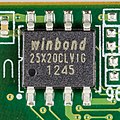History
Although ACE went defunct, and no computer was ever manufactured which fully complied with the ARC standard, the ARC system has a widespread legacy in that all operating systems in the Windows NT family use ARC conventions for naming boot devices. [1] [2] SGI's modified version of the ARC firmware is named ARCS. All SGI computers which run IRIX 6.1 or later, such as the Indy and Octane, boot from an ARCS console, which uses the same drive naming conventions as Windows. Most of the various RISC-based computers designed to run Windows NT have versions of the ARC boot console to boot NT. These include the following:
- MIPS R4000-based systems such as the MIPS Magnum workstation
- all Alpha-based machines with a PCI bus designed prior to the end of support for Windows NT Alpha in September 1999 (the Alpha ARC firmware is also known as AlphaBIOS; non-ARC Alphas use SRM console instead)
- most Windows NT-capable PowerPC computers (such as the IBM RS/6000 40P).
It was predicted that Intel IA-32-based computers would adopt the ARC console, although only SGI ever marketed such machines with ARC firmware (namely, the SGI Visual Workstation series, which launched in 1999).
This page is based on this
Wikipedia article Text is available under the
CC BY-SA 4.0 license; additional terms may apply.
Images, videos and audio are available under their respective licenses.
